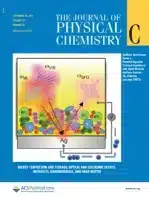
John T. Gaskins, Anuradha Bulusu, Anthony J. Giodano, John C. Duta, Samuel Graham, and Patrick E. Hopkins
Abstract
The influence of planar organic linkers on thermal boundary conductance across hybrid interfaces has focused on the organic/inorganic interaction energy rather than on vibrational mechanisms in the molecule. As a result, research into interfacial transport at planar organic monolayer junctions has treated molecular systems as thermally ballistic. We show that thermal conductance in phosphonic acid (PA) molecules is ballistic, and the thermal boundary conductance across metal/PA/sapphire interfaces is driven by the same phononic processes as those across metal/sapphire interfaces without PAs, with one exception. We find a more than 40% reduction in conductance across henicosafluorododecylphosphonic acid (F21PA) interfaces, independent of metal contact, despite similarities in structure, composition, and terminal group to the variety of other PAs studied. Our results suggest diffusive scattering of thermal vibrations in F21PA, demonstrating a clear path toward modification of interfacial thermal transport based on knowledge of ballistic and diffusive scattering in single monolayer molecular interfacial films.
Related Compounds
